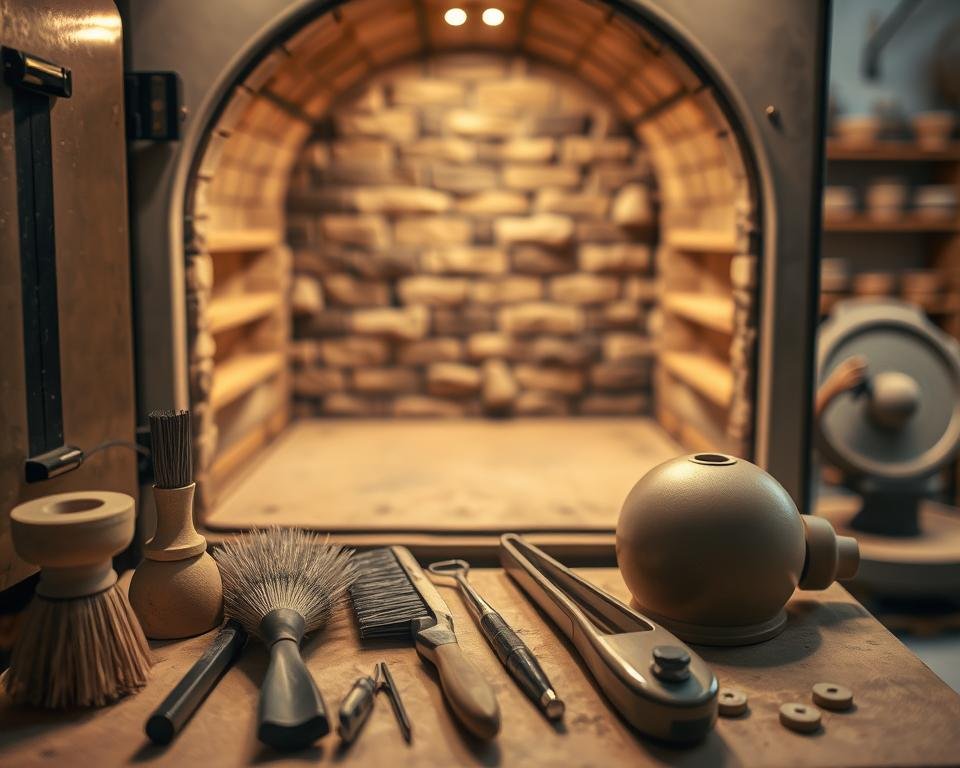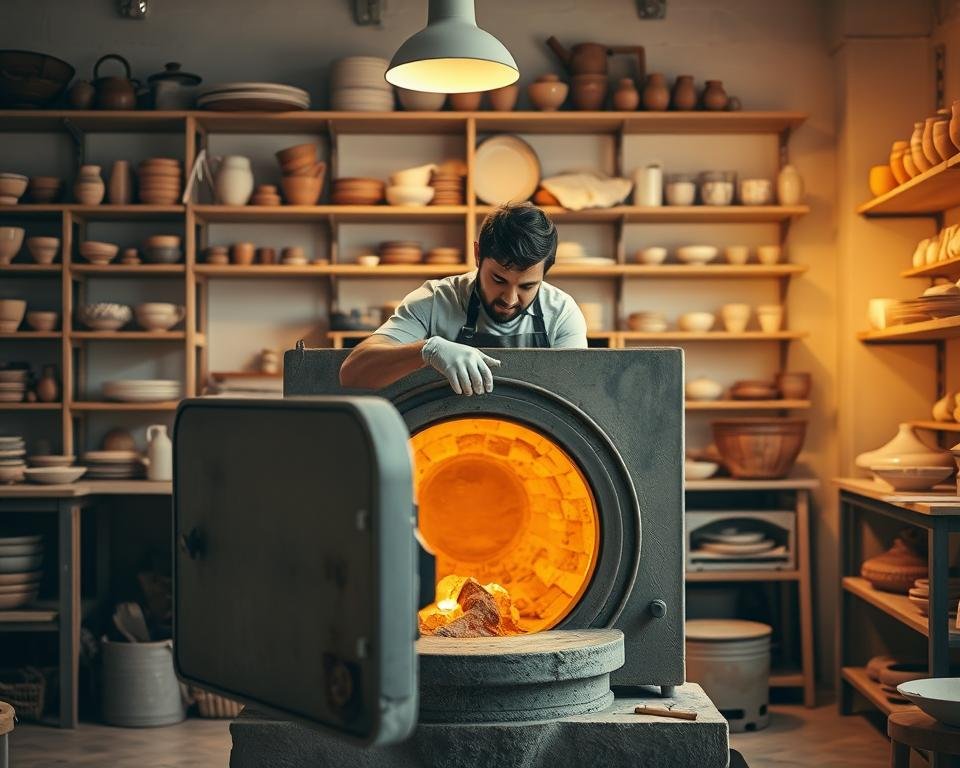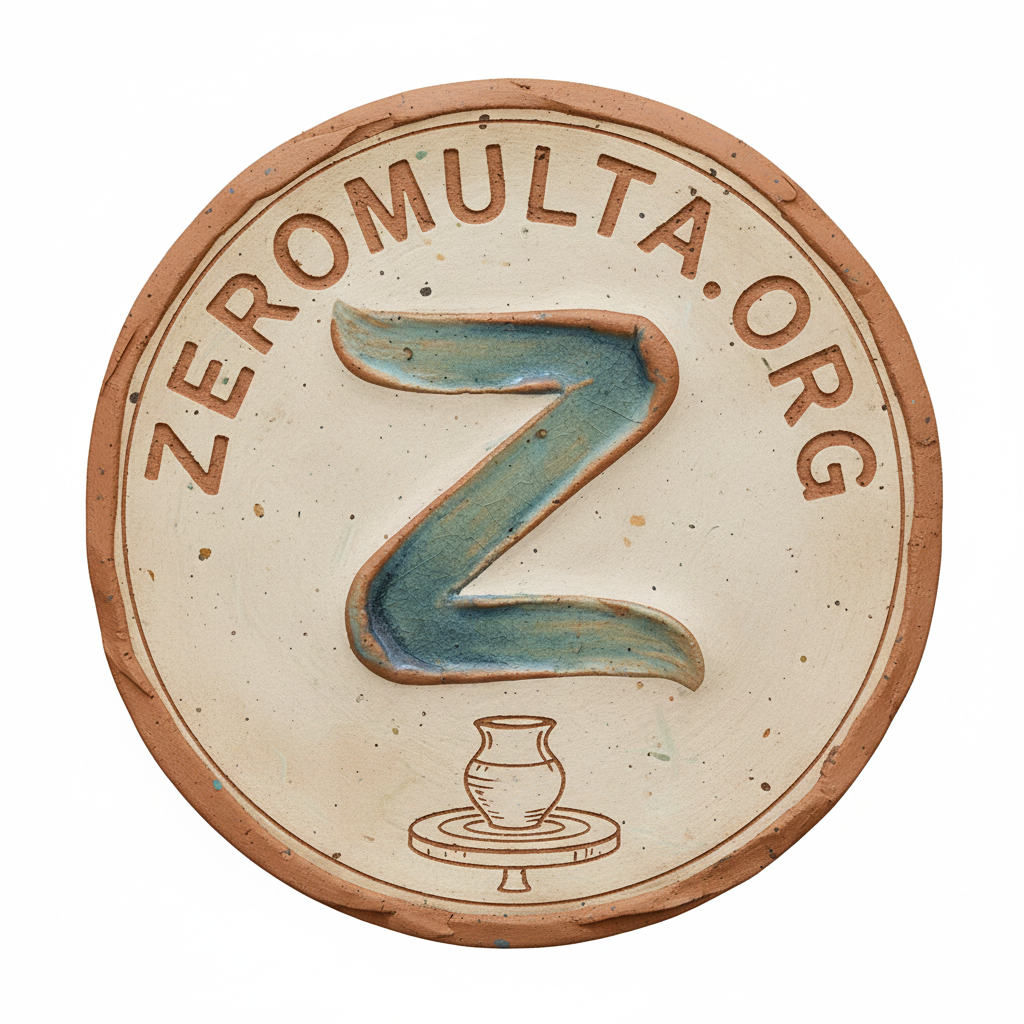As a potter, I’ve learned that a well-maintained studio is key for quality work. Did you know that ignoring your studio equipment can really hurt your productivity? It can even make your final products less good.
Keeping your equipment clean and well-maintained is important. It helps your equipment last longer and keeps you safe at work. In this article, I’ll share my best tips. You’ll learn how to keep your studio in top shape, from easy cleaning tips to seasonal tasks.
Key Takeaways
- Regular cleaning is essential for maintaining studio equipment.
- Seasonal tasks can help prevent equipment damage.
- Proper maintenance ensures a safe working environment.
- Well-maintained equipment improves productivity.
- Simple techniques can extend equipment lifespan.
Why Proper Maintenance Matters for Pottery Equipment
Regular maintenance is key to a successful pottery practice. It affects tool longevity and studio efficiency. By caring for your pottery equipment, you ensure it works well.
Benefits of Regular Maintenance
Regular maintenance has many benefits. It extends equipment life, prevents costly breakdowns, and ensures consistent performance. For example, keeping your kiln in good shape, as our guide on kiln maintenance shows, can lower firing failure risks.
Well-maintained equipment also makes your workspace safer. It reduces accident risks from faulty machinery. Plus, it helps keep your pottery quality high, thanks to consistent results.
Consequences of Neglecting Maintenance
Ignoring equipment maintenance can cause problems. It shortens equipment life and raises repair costs. Equipment failure can also stop your work and pose safety risks.
For instance, a neglected kiln might malfunction. This could injure you or damage your studio. Neglecting maintenance also harms your work quality. Faulty equipment can lead to uneven firing results, affecting your pottery’s quality.
Cleaning Techniques for Your Pottery Tools
Cleaning your pottery tools well is key to keeping them in great shape. As someone who loves pottery, I know how important it is. Good tools mean better work.
Regular cleaning gets rid of clay and stops debris from building up. This damage can harm your tools. We’ll look at the best cleaning products and how to use them.
Best Products for Cleaning
The right cleaning products are essential. Here are some top picks:
- Mild Soap and Water: Simple and effective for most clay residue.
- Specialized Clay Cleaning Solutions: Found at pottery stores, they tackle tough clay residue.
- Baking Soda and Water: A gentle scrub for dried clay without harming your tools.
| Cleaning Product | Effectiveness | Ease of Use |
|---|---|---|
| Mild Soap and Water | 8/10 | 9/10 |
| Specialized Clay Cleaning Solutions | 9/10 | 8/10 |
| Baking Soda and Water | 7/10 | 8/10 |
Step-by-Step Cleaning Instructions
Cleaning your pottery tools is easy. Just follow these steps:
- Remove Large Debris: Start by removing big clay pieces from your tools.
- Soak the Tools: Soak them in warm soapy water to loosen clay.
- Scrub the Tools: Use a soft brush to scrub off clay residue.
- Rinse and Dry: Rinse well and dry to avoid rust or corrosion.
By following these steps and using the right products, you can keep your tools in top shape. This ensures they work well and last longer.
Maintaining Your Pottery Wheel
To keep your pottery wheel working well, regular care is important. A pottery wheel is a big investment for any studio. Taking good care of it can make it last longer and save you money on repairs.
Regular Inspection Checkpoints
Checking your pottery wheel often is key to spotting problems early. Here are some important areas to look at:
- The wheel head for any signs of wear or damage
- The bearings for smooth operation and lubrication
- The belt for signs of wear or misalignment
- The motor for any unusual noises or vibrations
By regularly checking these areas, you can find and fix small issues before they get big. For example, a worn-out belt can make the wheel slip or not work right, leading to uneven pottery.
Lubrication and Belt Replacement Tips
Using the right lubricant is key for your pottery wheel’s smooth operation. Here are some tips:
- Use a high-quality lubricant made for pottery wheels
- Lubricate the bearings and other moving parts often
- Follow the manufacturer’s instructions for how often to lubricate
When it’s time to replace the belt, make sure to use the right type and size for your wheel. A bad or wrong belt can make the wheel not work right or vibrate too much.
| Lubrication Interval | Belt Condition | Action Required |
|---|---|---|
| Every 3 months | Check for signs of wear | Lubricate bearings |
| Every 6 months | Inspect for cracks or frays | Replace belt if necessary |
| Annually | Check for proper alignment | Adjust or replace belt |
Troubleshooting Common Issues
Even with regular care, problems can happen. Here are some common issues and how to fix them:
- Vibration or wobbling: Check the wheel head for imbalance or damage. Make sure the wheel is properly seated and aligned.
- Unusual noises: Look at the bearings and other moving parts for wear or damage. Lubricate or replace as needed.
- Slipping or malfunctioning: Check the belt for wear or misalignment. Adjust or replace the belt if needed.
By following these tips and doing regular maintenance, you can keep your pottery wheel running smoothly. This will help you avoid expensive repairs. Remember, a well-maintained pottery wheel is key to making high-quality pottery.
Caring for Kilns and Firing Equipment
A well-maintained kiln is key for top-notch ceramics. Kilns and firing gear are vital in any pottery studio. Taking care of them ensures safe and efficient use.

Safety Precautions When Handling Kilns
When working with kilns, safety comes first. Always wear protective gear, like heat-resistant gloves and safety glasses, to avoid injuries. Make sure your kiln is in a well-ventilated area to avoid inhaling fumes.
Regularly check your kiln’s electrical parts and connections. This helps prevent any hazards.
Cleaning the Kiln Interior
Cleaning your kiln’s inside is key for its efficiency and ceramic quality. Use a soft brush or a specialized kiln cleaning tool to remove debris or residue. Avoid harsh chemicals that could harm the kiln’s elements or structure.
For deeper cleaning, use kiln wash on shelves and floors. This prevents glaze from sticking. But, always follow the manufacturer’s cleaning product instructions for safe use.
Regular Temperature Calibration
Temperature calibration is essential for firing at the right temperatures. Regularly check your kiln’s temperature with a thermocouple or other tools. Adjust your kiln’s settings if you find any differences. This affects both your ceramics’ quality and your kiln’s life.
By sticking to these maintenance tips, your kiln will work safely and efficiently. This ensures high-quality ceramics for many years.
Pottery Brushes and Tools: Care and Storage
Keeping your pottery brushes and tools in good shape is key. It makes them work better and last longer. As a potter, having the right tools is essential for your work.
Cleaning Brushes Properly
Cleaning your pottery brushes is easy but needs care. Start by gently wiping off any clay with a soft cloth or paper towel. Next, wash the brushes with mild soap and warm water, making sure to lather well.
Rinse them well to get rid of soap, then shape them back to their original form. This helps prevent damage. Let them air dry.
If you’ve used the brushes with glazes, clean them differently. Use a solvent that matches the glaze type. Always follow the instructions for both the glaze and the solvent for safety and best results.
Optimal Storage Conditions
Storing your pottery brushes and tools right is as important as cleaning them. Keep them in a dry, well-ventilated spot where they won’t get crushed or bent. You can put them in a container or hang them, depending on the brush type and your workspace.
For metal tools, store them in a dry place to avoid rust. You can also apply a thin layer of oil to protect them. Keeping your tools organized and within reach makes your work more efficient and fun.
Resharpening Your Tools
Over time, your pottery tools might get dull and need sharpening. For metal tools, use a sharpening stone or diamond stone to sharpen them. The sharpening method depends on the tool type, so check the manufacturer’s guidelines or look up tutorials.
Sharpening your tools not only makes them last longer but also keeps them working well. Regular care, like cleaning and proper storage, plus occasional sharpening, will keep your tools in top shape.
Keeping Clay and Material Storage Organized
To keep your workflow smooth, it’s key to organize your clay and materials. A messy storage area wastes time and causes frustration. It’s hard to find what you need when everything is jumbled.
Organizing your storage is more than just tidiness. It’s about making a system that lets you focus on your craft. A few simple steps can make your studio much more productive.
Best Practices for Clay Storage
Storing clay right is important. It should be in a cool, dry spot, away from sunlight. This keeps it workable.
- Use airtight containers to prevent drying out.
- Label each container clearly with the type of clay and its properties.
- Store clay in a way that prevents it from becoming compacted or damaged.
Labeling and Inventory Management
Good labeling and inventory management are key for organized clay storage. Clear labels help you quickly know what’s in each container. This avoids confusion.
| Label Information | Purpose |
|---|---|
| Type of clay | Identify the clay body |
| Properties (e.g., plasticity, shrinkage) | Understand the clay’s characteristics |
| Date stored | Track the age of the clay |
Keeping an inventory of your clay helps plan projects and avoid buying too much. It’s also smart to check your clay regularly for any signs of spoilage.
By following these tips, you can make your pottery studio more efficient and productive. This improves your workflow and the quality of your work.
When to Replace Pottery Equipment
As a potter, knowing when to replace your equipment is key. Over time, your pottery gear wears out, impacting your work quality. Spotting the signs of needing new equipment helps you keep your studio running smoothly.
Signs of Wear and Tear
There are clear signs your pottery equipment needs a refresh. For example, if your pottery wheel sounds off or shakes too much, it might need new bearings. Also, if your kiln takes longer to heat up, it could mean the heating elements are failing.
- Excessive noise or vibration from the pottery wheel
- Kiln taking longer to heat up or failing to reach the desired temperature
- Cracks or significant wear on clay processing equipment
- Frequent breakdowns or the need for constant repairs
Regular checks on your gear can catch these problems early. This lets you plan for new equipment or repairs.
Balancing Cost and Replacement Needs
Choosing when to replace gear is about weighing costs against needs. While keeping old equipment might save money, it can hurt your productivity and work quality.
Think about these points when deciding:
- The age and condition of the equipment
- The cost of repairs versus replacement
- The impact on your work quality and studio efficiency
- The availability of new technologies or features that could improve your work
By considering these, you can decide when to upgrade your pottery equipment. This keeps your studio efficient and productive.
Keeping your studio in top shape improves your work and safety. Regular upkeep and timely replacements are essential for this.
Seasonal Maintenance Tasks for Potteries
To keep my pottery studio running well all year, I focus on seasonal maintenance. I check and upkeep my equipment as the seasons change.
What to Check in Spring and Fall
In spring and fall, I thoroughly inspect my pottery gear. In spring, I focus on kiln maintenance tips to get it ready for the busy season after winter. I check the kiln’s electrical parts, look over the refractory elements, and make sure the temperature control works right.
In fall, I get my equipment ready for the cold months. I make sure all clay storage spots are dry and free from moisture. This keeps the clay from getting ruined.
Preparing Equipment for Cold Weather
Cold weather can really hurt pottery equipment. To avoid damage, I take a few steps. I make sure my studio is well-insulated to keep a steady temperature. I also check my kiln to make sure it’s working well in the cold.
Also, I store my clay and other materials in a dry, warm spot. This stops them from freezing and getting damaged.

By doing these seasonal maintenance tasks, my pottery studio stays productive. And my equipment keeps working great all year.
Resources for Pottery Equipment Maintenance
Keeping your pottery equipment in top shape is key for making great ceramics and keeping your workspace safe. We’ve talked about the importance of regular cleaning, checks, and maintenance for your equipment’s long life.
I’ve found some great resources to help with your pottery work. They offer tips on taking care of your kiln and cleaning your studio equipment. For more detailed info, check out books and online guides focused on pottery equipment upkeep.
Recommended Guides
There are many online resources and books that give step-by-step guides on keeping your pottery wheel, kiln, and other gear in good condition. These guides can help you fix common problems and do routine cleaning tasks.
Local Pottery Communities
Being part of local pottery groups is super helpful. These groups often share tips and advice on keeping your equipment in top shape, including kiln care. By connecting with other potters, you can learn new things and keep up with the latest methods.
